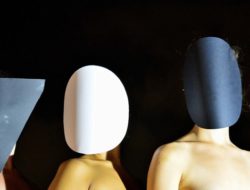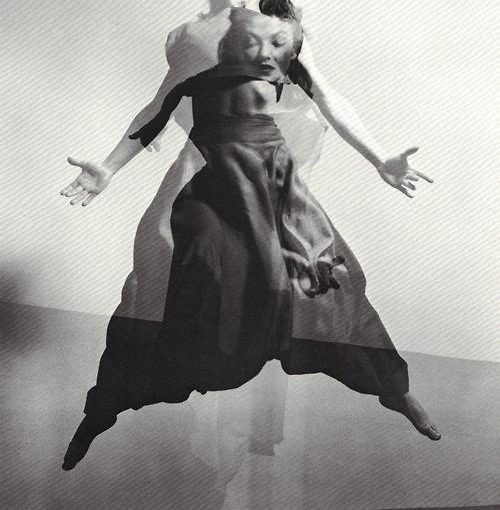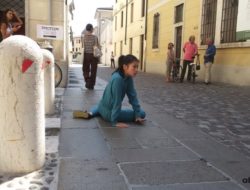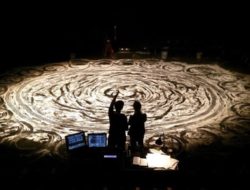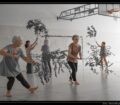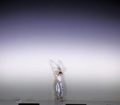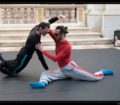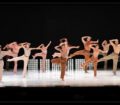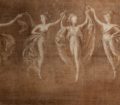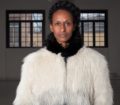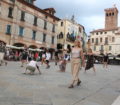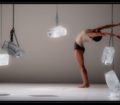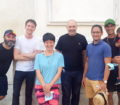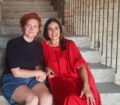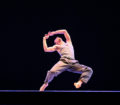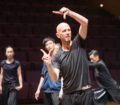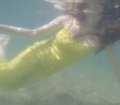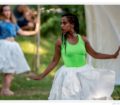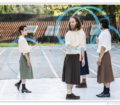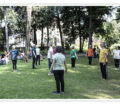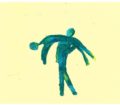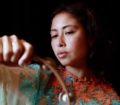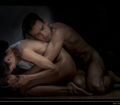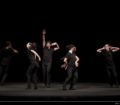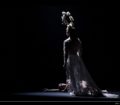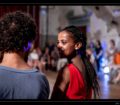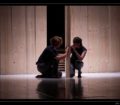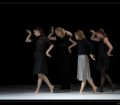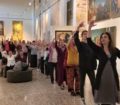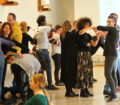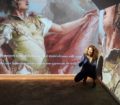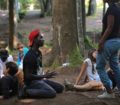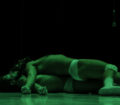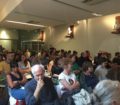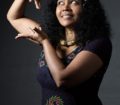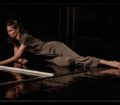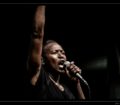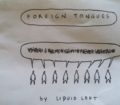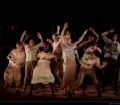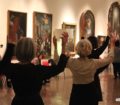I primi nightclub della storia, tra l’oscurità e il fumo dei loro locali, offrivano alle clienti un cocktail di emozioni illegali: fumare sigarette, portare il rossetto, bere Pink Lady, e soprattutto ballare.
Erano i primi decenni del XX secolo, anni di grande fermento per le donne.
Accanto alle fondamentali conquiste dal punto di vista politico, giuridico e sociale, le donne iniziavano a sperimentare anche un altro tipo di emancipazione: i loro corpi.
Mentre le gonne raggiungevano il ginocchio, e la ballerina canadese Maud Allan diventava l’espressione liberatrice della sessualità femminile, e la danza jazz di Joséphine Baker veniva accolta dagli intellettuali parigini come un nuovo ideale estetico, le donne di quella che sarebbe stata definita la “nuova danza” sperimentavano la libertà del corpo e dell’anima.
Sono i primi passi di una rivoluzione che negli anni a venire troverà terreno fertile da una sponda all’altra dell’oceano. Pensiamo a Valeska Gert che ha rivoluzionato i modelli di performance della scena tedesca, raccogliendo la sfida della rappresentazione del corpo, del piacere, e della sessualità. A Isadora Duncan che danzava a piedi nudi, e ha liberato la danza rivendicando l’importanza del corpo nella sua interezza e come strumento affinché l’anima si materializzasse. Martha Graham e Mary Wigman che hanno dato ordine alla danza libera di Isadora costruendo un metodo, una vera e propria tecnica alternativa a quella della danza accademica.
O ancora a Ruth St. Denis e la sua danza spirituale, Anna Sokolow, Trisha Brown e la sua danza verticale, con l’irruzione del gesto nel quotidiano.
E poi Pina Bausch che ha giocato un ruolo primario nella rivoluzione del corpo del 900, riportando l’emotività all’interno della danza, e permettendo al grande pubblico di riconoscersi in quello che succede nel palcoscenico.
La danza femminile ha avuto una forza dirompente nell’aprire la strada a nuovi modi di intendere l’arte coreutica, ma ha svolto anche un ruolo sorprendentemente emblematico nella storia della rivoluzione del corpo femminile, che negli anni si è mostrato al mondo anche come corpo politico.
Era il 1912 quando le suffragette marciavano unite lungo le strade londinesi facendosi largo tra una folla di insulti e ostilità per cambiare la Storia, ma ancora oggi il loro esempio è fonte di ispirazione. Penso alla “Women’s march” organizzata a Washington contro il presidente Donald Trump, o alle donne in bianco che hanno protestato contro il presidente Maduro in Venezuela.
Restituendo al corpo la capacità di indagare i paesaggi più profondi e oscuri dell’essere, la danza femminile ha creato il presupposto di un’idea di corpo nuovo, che ha terremotato prima e influenzato poi il panorama delle arti dal vivo.
Una grande lezione raccolta dai coreografi di allora, e che ha permesso a quelli di oggi di continuare a scavare nell’essenza dell’uomo, di lavorare con i corpi veri, segnati dal tempo e dalla gravità, fragili o abbondanti, di lavorare con la disabilità, con la densità di ogni stagione della vita.
Ai corpi viene così restituita un’assoluta e tangibile significanza, una voglia e un bisogno di verità profonda.
Sono i corpi liberati che raccolgono le istanze della crisi e del cambiamento.
Sono i corpi dei cittadini di Bassano in processione per commemorare Luca Russo, il giovane morto nell’attentato di Barcellona, la manifestazione più alta del loro autentico valore sociale, politico, collettivo.
Rita Borga
_____________
ENG
#Dancingwomen: the liberated body
The first nightclubs in history, with the darkness and smoke of their rooms, offered a cocktail of illegal emotions to their female clients: smoking cigarettes, wearing lipstick, drinking Pink Lady, and especially dancing.
Those were the first decades of the 20th Century, years of great turmoil for women. Besides the fundamental conquests from a political, juridical and social point of view, women were experimenting with another kind of emancipation, too: their bodies.
While skirts reached the knee, and the Canadian dancer Maud Allan became the liberating expression of female sexuality, and Joséphine Baker’s Jazz dance was welcomed by Parisian intellectuals as a new aesthetic ideal, women of what would be defined as “new dance” were experimenting the freedom of the body and of the soul.
Let’s make a couple of journeys in time passing from one side of the ocean to the other, and let’s think of Valeska Gert, who revolutionised the models of stage performance of the German scene, embracing the challenge of representing bodies, pleasure, sexuality.
Think of Isadora Duncan, whodanced barefoot and freed dance, claiming the importance of the body in its entirety and as a tool, so that the soul could materialise. Martha Graham and Mary Wigman, who gave order to Isadora’s free dance elaborating a method, an actual technique alternative to that of academic dance.
Or of Ruth St. Denis and her spiritual dance, Anna Sokolow, Trisha Brown and her vertical dance, with the
irruption of the everyday gesture.
And last but not least, Pina Bausch, who played a central role in revolutionising the body of the 20th century, bringing emotion back within dance, and enabling theaudience to identify with what is happening on the stage.
Women’s dance has been an explosive force in paving the way for new ways of interpreting the art of dance, but it also fulfilled a surprisingly emblematic role in the history of the revolution of the female body, which through the years also became a political body.
It was 1912 when the suffragettes marched united in the London streets, making their way through a hail of insults
and hostilities to change History, so much so that they are a source of inspiration even today. I think of the “Women’s march” organised in Washington against President Donald Trump, or of the women in white who protested against President Maduro in Venezuela.
Giving the body back the ability to investigate the deepest and darkest landscapes of the being, women’s dance has created the premise of a new idea of the body, which at first disrupted and then influenced the scene of live arts.
A great lesson drawn by the choreographers of the time and thatallowed the current ones to keep digging into the age of man, to work with real bodies, marked by time and by gravity, frail or abundant, to work with disability, with the density of each of life’s seasons.
In this way, an absolute and tangible significance, a longing and a need for profound truth is restored to the bodies.
It is the liberated bodies that collect the motions of crisis and of change.
It is the bodies of Bassano’s citizens in procession to commemorate Luca Russo, the young man killed in
the Barcelona attack, that are the greatest display of their authentic social, political and collective value.
Traduzione by Elena Baggio
Appuntamento a questo pomeriggio con gli spettacoli di:
Satchie Noro/ Silvain Ohl (Francia): Origami – h 18 – Parco ragazzi del ‘ 99
OOna/Oona Doherty ( Irlanda): Hope Hunt and Ascension into Lazarus – h 19 e 22.30 – CSC Garage Nardini
Silvia Gribaudi (Italia): R.OSA – h 19.20 e 22.50 – CSC Garage Nardini
Yasmeen Godder (Israele): Two Playful Pink – h 21 – Teatro Remondini
Tags: #dancingwomen, Bmotion, operaestate

